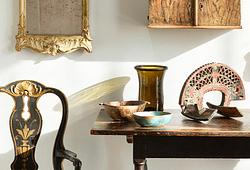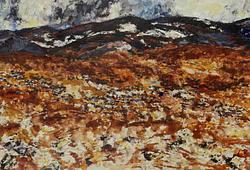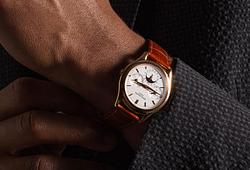Skål, porslin. Qingdynastin, Kangxis märke och period (1662-1722).
Rundade sidor med utsväng mynning, dekor i underglasyrblått av figurscen med lärda män i landskap. Insidan med ett träd i kruka. Botten med a Kangxi Nian Zhi märke. Diameter 20 cm.
Två sprickor. Ifylld nagg.
Proveniens
Property of a private Finnish collector. Purchased at Bukowskis.
Litteratur
most likely refer to the famous 'Eighteen Scholars of Tang', a group brought together to advise the Tang emperor Taizong (r.626-49) before he assumed the imperial seat. The activities they are performing formed the 'four scholarly arts' and represent the accomplishments required of traditional scholar-gentlemen. Individually, these arts had long been associated with literati figures, but the earliest known source combining all four is the Compendium of Calligraphy (Fashu Yaolu) written by Zhang Yanyuan in the 9th century. From ancient times, literati were reported to meet in remote spots to discuss philosophical ideas, paint, drink and pursue the other scholarly arts, with the most famous gathering being the legendary meet at the Orchid Pavilion in the year 353. These meetings, far away from the constraints of court life, came to represent political and artistic freedom during the turbulent years of the Ming-Qing transition. Consequently, such depictions of idealised scholarly self-cultivation became highly popular in Kangxi ceramic design.
















































